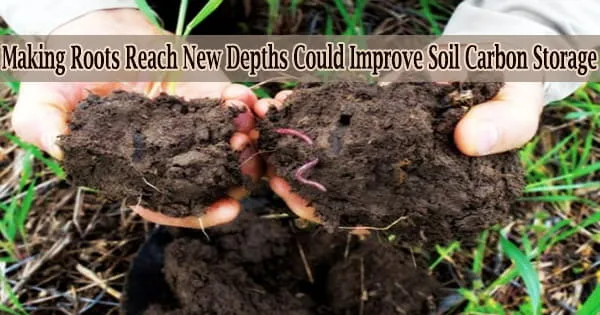Researchers have found a way to potentially design root systems to grow deeper by making their angle of growth steeper so that they can get the nutrients they require to flourish. This finding may also help researchers create new strategies for capturing carbon in soil.
A crucial gene in wheat and barley that regulates the angle of root growth has been identified by scientists from the University of Nottingham and Bologna. Steadier root angles increase the depth at which carbon is buried in the soil and the resistance of crops to drought stress.
The scholarly publication Proceedings of the National Academy of Sciences has just published their findings.
The Nottingham team has found that a new gene, known as Enhanced Gravitropism 1 or EGT1, regulates root angle by hardening the core of developing root tips, making it harder to bend downward.
However, the team’s use of X-ray micro CT imaging revealed that every type of root had a steeper angle when this gene is damaged.
Root angle controls how efficiently plants can capture water and nutrients. For instance, shallow roots best capture phosphate which accumulates in the top-soil region, while steeper roots are better for foraging for water and nitrate in deeper soil layers. Steeper roots are also important for helping bury carbon deeper into the soil. Discovering genes like EGT1 and how they control root angle is critical for developing novel future crop varieties better able to capture nutrients and carbon.
Rahul Bhosale
Rahul Bhosale, Assistant Professor from the School of Biosciences and the Future Food Beacon at the University of Nottingham, who co-led the research, explains:
“Root angle controls how efficiently plants can capture water and nutrients. For instance, shallow roots best capture phosphate which accumulates in the top-soil region, while steeper roots are better for foraging for water and nitrate in deeper soil layers. Steeper roots are also important for helping bury carbon deeper into the soil. Discovering genes like EGT1 and how they control root angle is critical for developing novel future crop varieties better able to capture nutrients and carbon.”
Researchers from Penn State University, the University of Adelaide, and the University of Bologna are a part of the worldwide collaboration. ARPA-E, BBSRC Discovery Fellowship, European Research Council, Royal Society, funded the Nottingham team and University of Nottingham Future Food Beacon awards.





